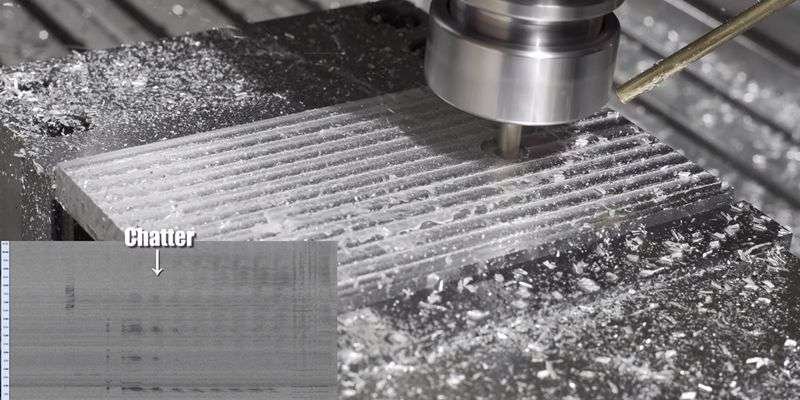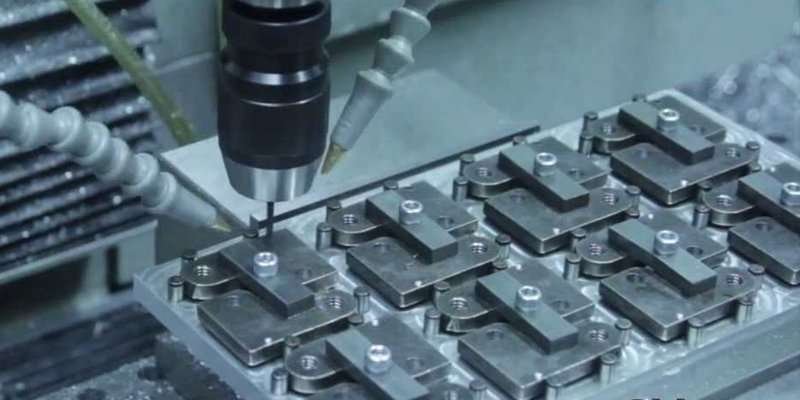The CNC machining process offers several benefits due to its automation and use of machine tools controlled by computers to create parts from raw materials. These benefits include increased precision, consistency, speed, and the capacity to create precise features with complex geometries. In addition, it also works well to create parts from plastic, metal, and other materials.
Compared to conventional machining techniques, CNC machining permits the use of sophisticated cutting methods and equipment, such as multi-axis machining and high-speed machining, which can enhance the process’ effectiveness and caliber. So, what is CNC machining? What type of process does it involve? Do read on as we discuss this topic in detail.
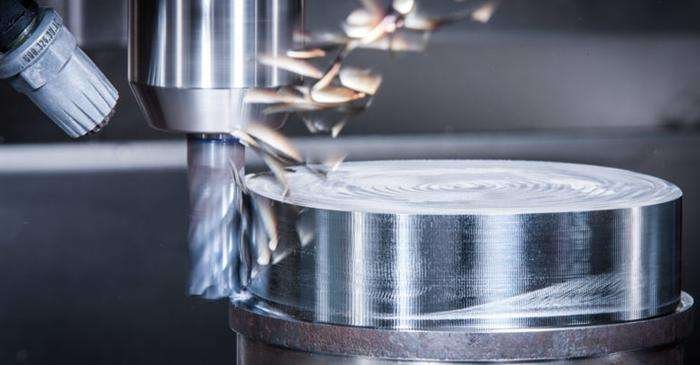
Table of Contents
ToggleWhat is CNC Machining?
This is a subtractive manufacturing process that shapes an item or part by gradually removing material from a workpiece until the intended shape is attained. In other words, it entails using computer software to control a machine’s motion and functionality.
The function of Computer Numerical Control is to translate a digital model of a component into a series of commands that direct the movements of the machining tools to produce the desired result. Also, CNC machining is a versatile process that allows working on various materials, including metals, metal alloys, wood, stone, plastics, and more.
At the same time, there are different tools and tool sizes used during CNC machining. These tools and their sizes change depending on the machined component that has to be manufactured. Compared to other production techniques, CNC machining can offer higher adaptability, efficiency, and precision since it is computer-controlled. This makes it a well-liked manufacturing option for various machining businesses and uses.
Different Techniques in CNC Machining
CNC machining is not a monotonous process, and manufacturers employ several techniques when making products using CNC machining. The common types of CNC Machining include:
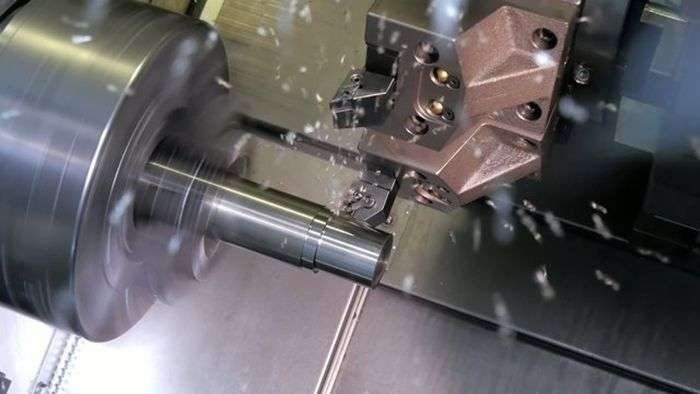
CNC Turning
CNC turning is a crucial process for producing accurate and precise cylindrical components. The actual CNC turning operation is straightforward as it involves installing a cylindrical part on the rotating machine, with the CNC cutting tool running parallel to the rotational axis.
Engine parts, shafts, bushings, and gears are just a few components frequently produced using CNC turning. Compared to hand turning, CNC turning has various benefits, including improved uniformity, reproducibility, and efficiency.
CNC Milling
CNC milling machines employ a rotating cutting tool to produce a variety of forms and products while operating on a perpendicular axis. The method is widely used in various industries, including those that produce consumer goods, aircraft, automobiles, and medical equipment.
Workpiece positioning is one aspect of CNC milling basics that differs from conventional milling. The cutting tool often travels in various directions while the workpiece stays still. They also remove the material as it travels following the computer’s instructions. Also, to achieve the desired result, machinists often program the milling machine to perform many passes on the workpiece.
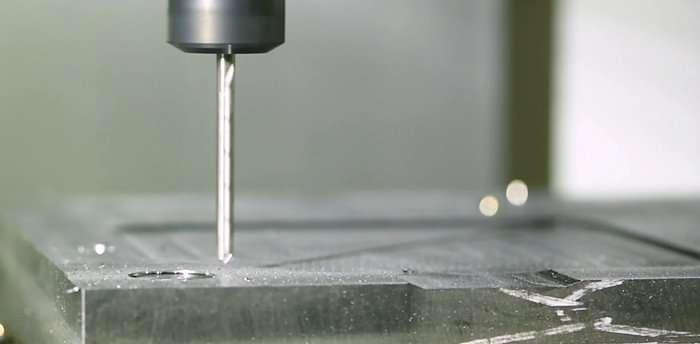
CNC Drilling
Different-sized holes can be made in a workpiece through the CNC drilling process. This works with the aid of a computer, which precisely regulates the drill bit’s movement and speed. The procedure is entirely automated.
Compared to hand drilling, the procedure has several benefits, including improved precision, repeatability, and efficiency. Printed circuit boards, metal components, and polymers are a few of the sectors that frequently use CNC drilling.
CNC Plasma Cutting
In the manufacturing process known as plasma cutting, conductive materials like metals are cut using a high-velocity plasma stream. In plasma cutting, an electrode and the workpiece are connected by a plasma arc that is created by a plasma torch and has the power to pierce the material.
The material is then melted and vaporized by the plasma arc. Besides, a high-pressure gas stream (such as air or nitrogen) is needed to blast the molten material away from the cut edge. Consequently, there is little distortion or discoloration, and the cut is clean and exact, reducing the need for post-processing.
CNC Routing
CNC routers operate similarly to milling machines in their basic functions. Routers generally work with softer CNC machining materials like wood, whereas milling is frequently used with harder metals. Routers produce exceptional efficiency, consistency, and precision like any CNC machining operation.
The spindle rotates in various directions while the workpiece is fully immobile during the routing operation. When softer materials are used, the spindle’s total turning speed might be fairly low during routing.
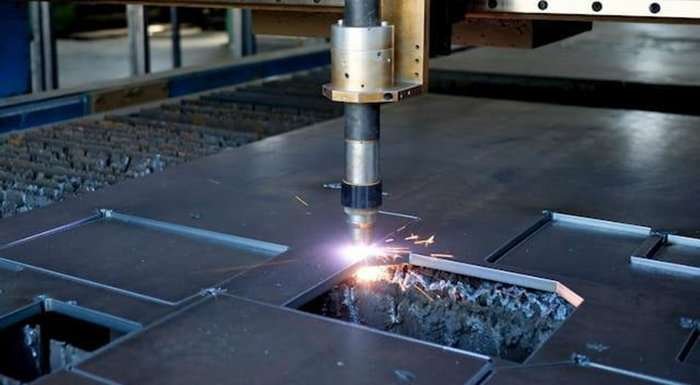
CNC Laser Cutting
This is another typical cutting procedure that enjoys popularity due to its ability to provide accurate and exact outcomes quickly. This procedure is widely used in most industries, including aerospace, medical, and military since the laser can cut through most materials. Also, laser cutting is a highly precise and repeatable process, which results in less waste and lower production times.
Read More: CNC Cutting vs Laser Cutting
CNC Grinding
A revolving flat abrasive wheel is used in CNC grinding machines to remove material from uneven workpiece surfaces. The grinding or abrasive wheel spins rapidly. Typically, this CNC machining operation produces a product with a smooth finish.
Common Terminologies in CNC Machining You Need to Know
In this industry, understanding the terms used in CNC machining is essential. Here are common terminologies used in CNC machining;
CAD
Computer-aided design (CAD) software generates a 2D or 3D visual representation of the desired final product. Simple pieces with individual CAD models are typically used to make complicated CNC machining parts.

CAM
CNC codes that a machine can interpret are created using computer-aided manufacturing (CAM) software. These programs assist in automating many machine types, including CNC machines.
To use a CNC machine, CAM software collaborates with CAD applications. The majority of high-quality CNC machines have complimentary CAM software. Explore the latest CAM software options.
MDC
Software for manufacturing data collection (MDC) gathers information from operators and equipment about the various manufacturing data produced in real-time.
Manufacturers can make improvements to the current manufacturing line using this information. It also identifies the reasons behind any production losses and delays.
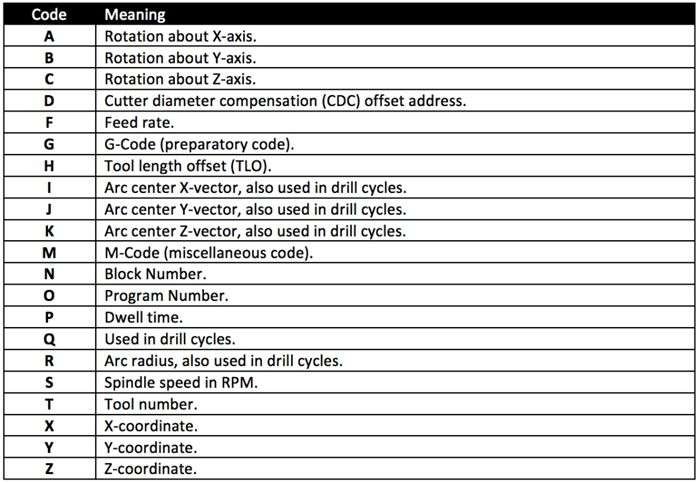
G-Code
G-code (Geometry code) is an alphanumeric directive instructing a CNC machine on moving. In G-code, the letters X, Y, and Z represent the axes of movement, while the numbers represent the values along each axis. Line number N is referred to here. Some specific codes control the machine’s ability to do CNC operations, like changing the spindle speed or turning it on and off.
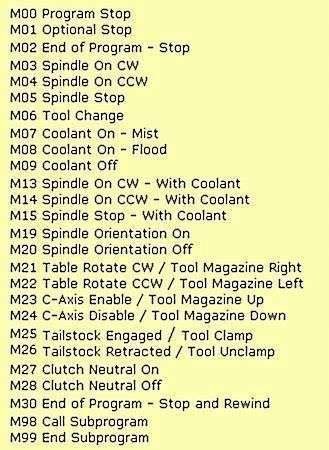
M-Code
M-codes are various machine codes that carry out the CNC machine’s non-cutting operations. These involve initiating and terminating various programs, managing the flow of coolant, or modifying the behavior of cutting tools.
CNC Machining Process: How it Works?
A lot of thought must go into CNC machining procedures, starting with the initial design and continuing through manufacture. So, how does CNC machining work? It works in three phases.

Design 3D Files
Design files are the deliverables for the first phase of CNC machining. These files come in CAD, CAM, and CAE formats. The use of CAD/CAM software by engineers and designers helps them create the overall design of the component and product, which is then evaluated for its CNC manufacturing potential.
This evaluation, commonly referred to as DFM (Design for Manufacturing), is a crucial step since it guarantees the most advantages at the lowest possible cost while considering the current technology’s constraints.
CNC Programming
G-codes or M-codes are the main means of communication with a CNC machine. These codes, which are essentially the cutting tool’s navigational guide in CNC machines, are produced by CAM programs.
If the design adheres to the DFM guidelines, CNC machinists will typically not need to intervene in the operations or pre-processing. If not, additional action could be required to guarantee top performance.
It is important to note that the overall effectiveness of the design process dictates how much time is required for pre-processing. The G-Codes or M-Codes may be programmed in a short amount of time or longer, depending on the design’s complexity.
Additionally, the codes would be accurate and produce usable results if the overall design adheres to the required DFM principles. Contrarily, design errors would lead to defective codes, which would inevitably provide undesired consequences.
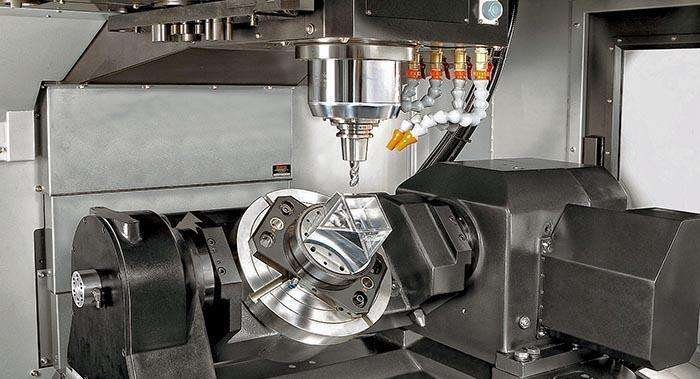
Machine Setup and Processing
The actual machining procedure, which employs the codes supplied in the previous phase to remove extra material from a block, is the last step. This phase begins with selecting the right machine for the Job. There are different types of CNC machines, including 3,4,5-axis machines and machines for different manufacturing techniques from drilling to turning and milling.
It is important to note that while precision machine tools are generally very significant, they can’t precisely duplicate the CAD model’s dimensions. For this reason, machinists typically employ tolerances that vary based on the demands of the industry. However, tight tolerances would increase the manufacturing unit’s expenses.
Types of CNC Machines and Their Uses
As mentioned above, we discussed different CNC machining techniques. Usually, different technologies correspond to different CNC machine types. Below are these machines and their uses.
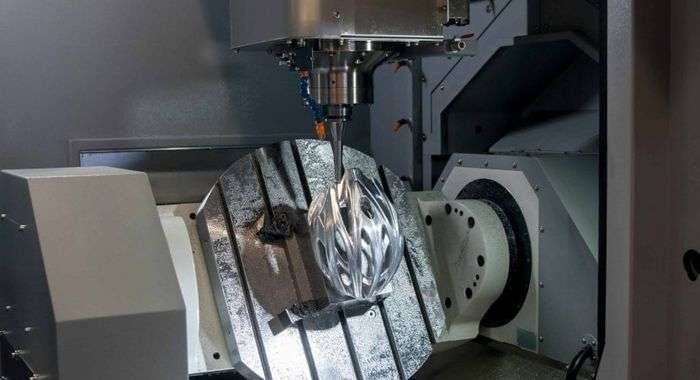
Milling CNC Machine
The most widely used CNC milling machines are the 3-axis, 4-axis, and 5-axis models. The number of axes on these devices is what distinguishes them. The capability of the CNC machine, its level of precision, and many other factors will depend on how many axes it has. Several industries, including automotive, aerospace, medical, and consumer electronics, use these machines to make their parts.
CNC Lathes
A CNC lathe is a device that spins a workpiece on a spindle and uses a computer to manage a group of cutting tools along two axes, X and Z, to carry out different operations on the material.
Additionally, CNC lathes are also capable of drilling and milling to produce exact round forms with an outside and an inner diameter.
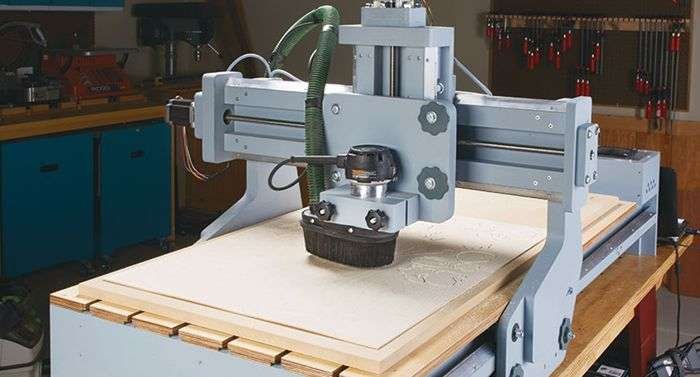
Routers
The spindle of a CNC router is used to cut and engrave various materials, including plastic, wood, acrylic, glass, metal, and foam. They can perform several machining processes, including drilling, tapping, milling, and grinding operations.
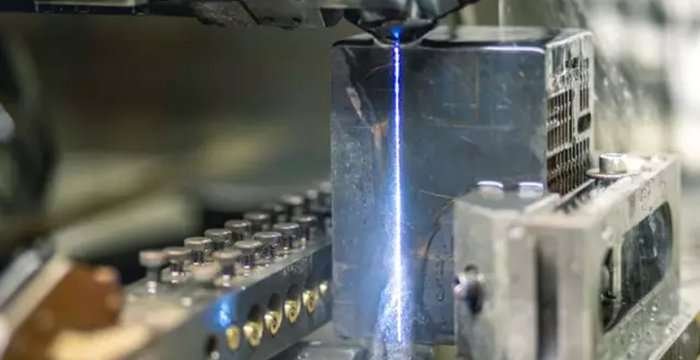
Electric Discharge Machines
Regardless of the hardness of the component, electric discharge machining (EDM) is a non-contact manufacturing technology that can handle it. It entails dipping an electrically conductive workpiece and an electrode or wire into a flowing dielectric fluid. Using heat energy, the EDM process entails removing extra material from the workpiece to give it the precise form needed for a task. There are three different forms of EDM: sinker, hole, and wire.

Water Jet Cutters
This uses a high-pressure water jet to pierce various materials, including metals, polymers, and composites. A waterjet cutter may cut almost any form, thickness, and material. The method is adaptable and usable to produce parts in many other sectors, including the aerospace, automotive, and medical fields.
Laser Cutters
The devices known as laser cutters utilize a computer to regulate a laser beam that may cut or etch materials. Following specific instructions provided in CNC or G-code, the laser beam ignites, melts, or vaporizes the substance it comes into contact with.
Surface Grinders
An abrasive tool known as a surface grinder aids in generating fine finishes on flat surfaces. In other words, the machine grinds down material surfaces to level and flatten them. The surface grinder has a grinding wheel that works away at surface height disparities by spinning at an enormous speed.
CNC Machining Support Software for Beginners
Software programs are used in the CNC machining process to guarantee the accuracy, precision, and optimization of the component or product being produced.
CAD and CAM
Computer-aided design (CAD) is software for creating 2D vector or 3D solid component and surface representations and the appropriate technical documentation and part requirements. On the other hand, the CAM (Computer Aided Manufacture) software is used to build the machine code required to operate the CNC machine and control the tooling to produce the custom-designed item by extracting technical data from the CAD model.
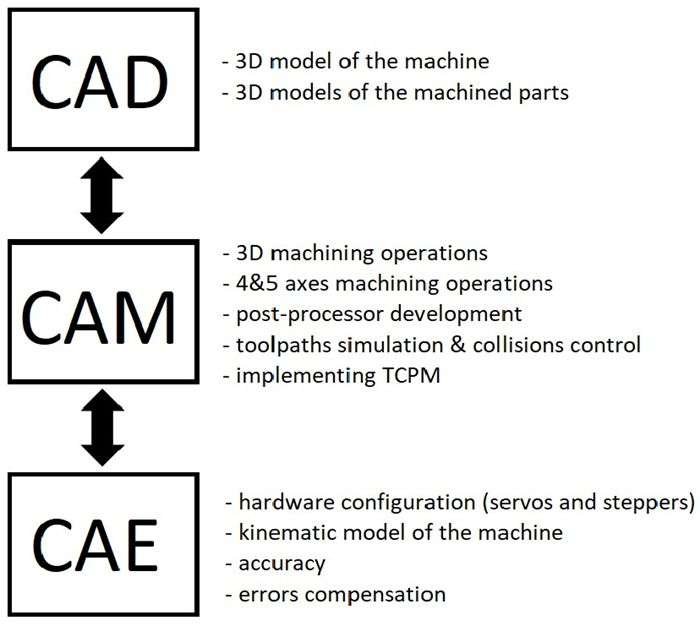
CAE
Engineers employ computer-aided engineering (CAE) software during development, pre-processing, analysis, and post-processing stages. In engineering analysis applications, including design, simulation, planning, production, diagnostics, and repair, CAE software is utilized as an auxiliary support tool to aid in assessing and revising product design.
Benefits and Limitations of CNC Machining
CNC machining facilitates the rapid production of parts or products regardless of complexity and material type. This production technique, while beneficial, is not without limitations.
Benefits of CNC Machining
Repeatability and Product Consistency
Every part produced has the same appearance and functionality thanks to computer numerical control (CNC) machining. Human mistake is not a possibility. This results in the creation of precise pieces that fulfill their intended function.
Versatility and Flexibility
It is possible to program CNC machines to work with different materials, including metal, plastic, wood, and composites. This makes them versatile and adaptable to different manufacturing needs.
Accuracy and Precision
The method of CNC machining is extremely precise. For CNC milling and turning, tight tolerances of ±0.01mm or even ±0.005mm could be achieved. Due to the CNC machining process automation, it is easier to manufacture the exact parts repeatedly.
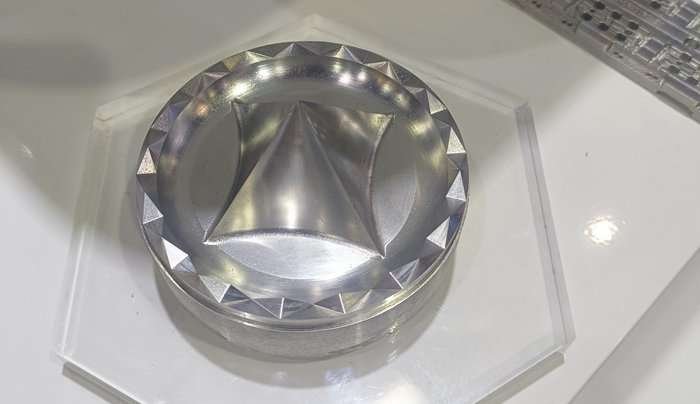
Limitations of CNC Machining
High Initial Start-up Cost
The initial cost includes acquiring the machine and training operators and other professionals. It also considers the cost of getting specialized tools for some processes. These costs, while high, are still lower than those incurred during processes such as injection molding.
Design Restrictions
The tool must have access to all required cutting surfaces since CNC machining is a subtractive technique that removes material from a solid blank. Due to limited tool access, features like internal geometries and undercuts are difficult to machine. Besides, it is also challenging to round off interior sharp angles by CNC machining.
Design Guidelines for Your CNC Machining Projects
This section will go through some of the important design factors that can make your item easier to manufacture and, consequently, provide higher-quality parts at more affordable prices.
Undercuts and Internal Features
The required cutting surfaces must all be accessible to the CNC tool. Consequently, it is best to avoid them during design because features like significant undercuts and internal geometries cannot be machined due to tool access limitations. Nonetheless, if your design calls for an undercut, here is the recommendation: Tool clearance > 4 x Height; Depth < 2 x Height.
Guo, a CNC Engineer at XinCheng Machining, advises against incorporating sharp internal corners in your CNC designs. Due to the nature of milling with round tools, achieving sharp corners is not feasible. Instead, it is essential to use radiused corners, and these radii should exceed the size of the cutter being employed.
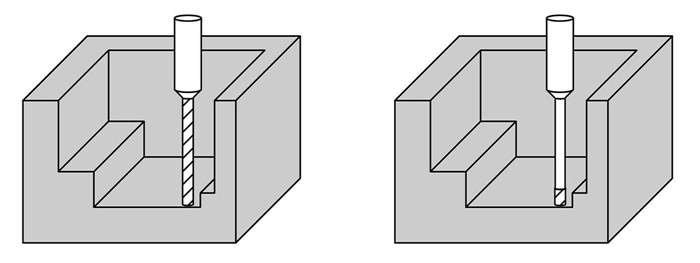
Cavity Depth
To maintain a satisfactory machining finish, it is advised to keep cavity depth to no more than four times the cavity width. Larger-diameter, specialized tools can be used to manufacture deeper holes.
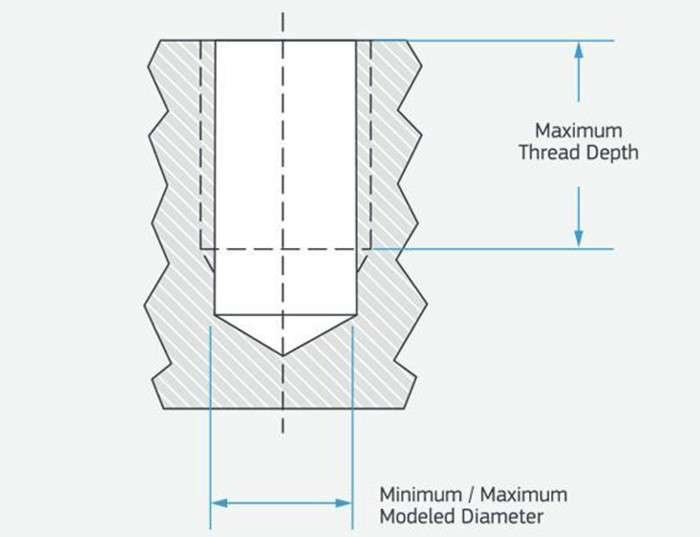
Hole Depth
It is advised to utilize conventional drill bit sizes when including holes in your design. Tools like reamers and boring machines may create holes with precise tolerances. The depth of drilling that is feasible increases with the hole diameter.
Minimum Wall Thickness
The walls of your component may get cracked or distorted as a result of CNC machining if they are too thin. Designing your item with a proper wall thickness is crucial to minimize vibrations. The recommendation is 1.00 for plastics and 0.5mm for metals.

Correct Aspect Ratio
CNC machined Parts with an excessive aspect ratio are susceptible to unwelcome vibrations, just as thin walls, which might cause the part to distort or shatter. To prevent component failure, it is crucial to design your part with a correct aspect ratio. The recommended height/width Aspect ratio is ≤ 4.
Cost Reduction Tips When Choose CNC Machining Process
The following three basic factors will greatly impact your part’s cost.
- Design: The type of design influences the cost of CNC machining. The higher the complexity of a design and its geometries, the more costly its production becomes.
- Material: Material takes into consideration the cost of the material and its machinability. Some materials are more machinable than others, while some are more expensive. For instance, machining with Titanium would be more expensive than aluminum, because aluminum is cheaper and more easily machinable than Titanium.
- Quantity: With CNC machining, the cost of production reduces as the quantity of product increases. This is due to the fixed setup cost of this process.
Read More: Cost of CNC Machining: Factors and Tips to Save Money
Typical Materials Used in CNC Machined
Due to its versatility, it is possible to perform CNC machining on a wide range of materials. However, the list of common materials includes.
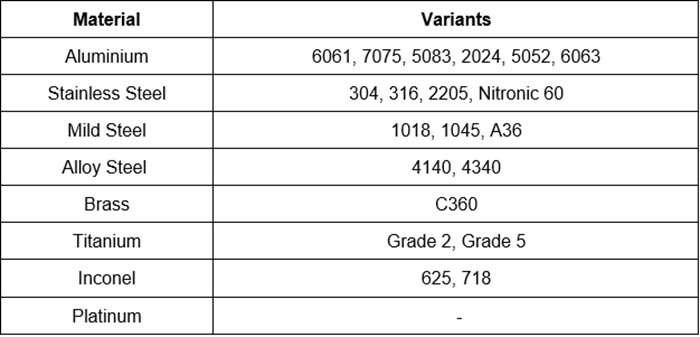
Metal CNC Machining Materials
- Aluminum
- Stainless Steel
- Copper
- Titanium
- Brass
- Mild Steel
- Alloy Steel
- Tool Steel
- Magnesium
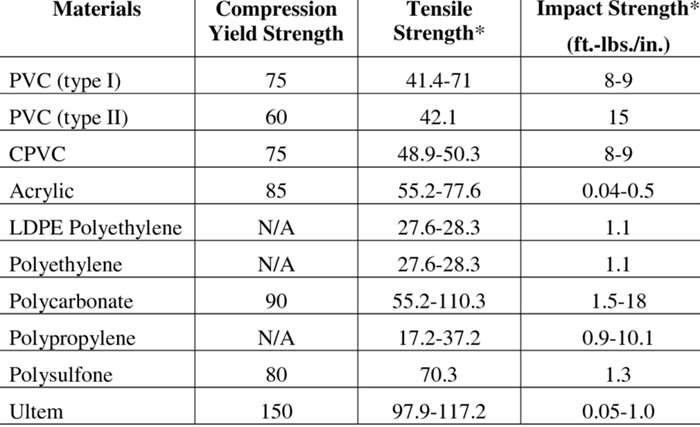
Plastic CNC Machining Materials
- ABS
- POM (Delrin)
- PEEK
- PP
- PC
- HDPE
- GF+PA(Nylon)
- Ultem
What Applications of CNC Machining?
One production technique not restricted to a certain sector or use case is CNC machining. It has several applications, including:
Automotive Parts
CNC machines can create different automobile and truck parts. Components for the gearbox, the suspension, and the engine are a few examples.
Medical Devices
Precision parts for medical equipment, including implants, prostheses, and surgical tools, may be produced using custom CNC machining.
Consumer Products and Electronics
CNC machines can make numerous consumer parts. These include electronics, toys, and everyday home products that fall within this category.
Aerospace
Most mission-critical, secure, and reliable aerospace parts are produced using a production technology called CNC machining. This technique makes producing aerospace parts like winglets, engine parts, fairings, airframe assemblies, and decorative embellishments easier.
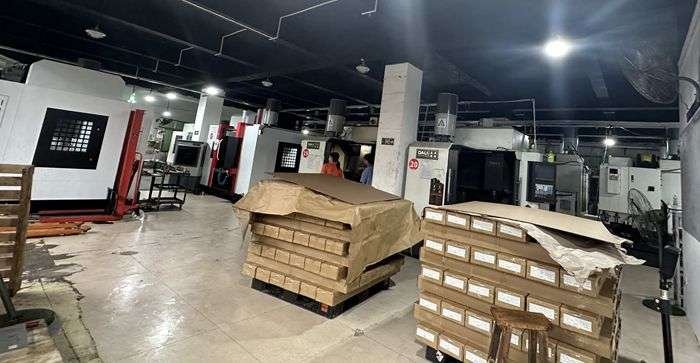
XinCheng: A Reliable Company for Your CNC Machining Project
Small and medium-sized firms lack the necessary resources to set up and maintain CNC machines. Therefore, choosing CNC machining partners is a typical solution that gets around this problem. XinCheng is your reliable manufacturing partner, offering cost-effective CNC machining services, including milling, turning, drilling, EDM, and so on.
At the same time, our advanced facilities and highly skilled team are dedicated to providing precision CNC machining solutions to meet the unique requirements of your project. Whether you need prototypes, parts, low-volume production, or high-volume manufacturing, we have the capabilities and expertise to deliver the best results.
At XinCheng, we also understand that the success of your project depends on more than just the machining process itself. Therefore, our commitment to customer satisfaction extends to every aspect of our services, from communication and collaboration to on-time delivery. Contact us today to discuss your project requirements and discover how we can contribute to the success of your products.
FAQs
Are CNC machines hard to operate?
There are operating instructions specific to each type of CNC machine. CNC machines are generally simple to use but require a highly skilled operator to produce parts that meet industrial standards.
Is CNC operator in high demand?
CNC operators are in high demand nowadays since CNC machines have replaced the production process in most industries.
What are the trends in the CNC machining industry?
Full automation of the process, increasing the number of axes on CNC machines, and creating additional features for simple customization are among the developments in the CNC machining sector.

